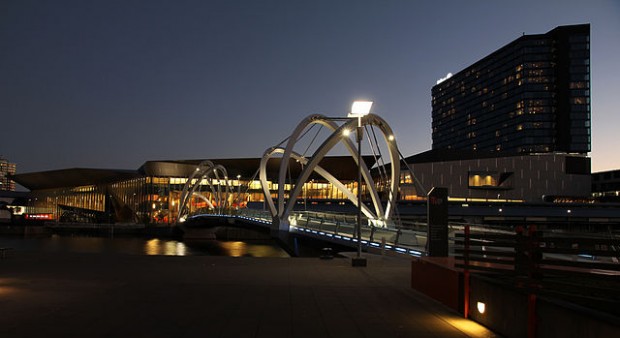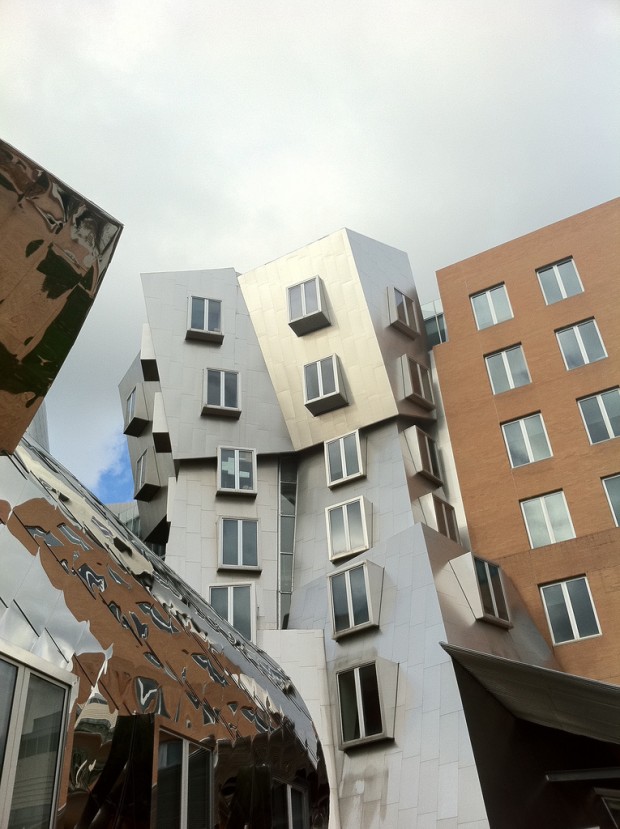The construction industry seems to think so. Over the last couple of decades more and more building projects have incorporated a cladding system into their design.
Although they are aesthetically more pleasing than the bare concrete jungles that cropped up in the 1960’s façades are far more than just putting on a pretty dress to cover unsightly lumps and bumps. A properly designed façade can help to reduce the buildings energy consumption too. Improving the natural lighting and offering better airflow makes a façade clad building both functional and easy on the eye.
South Wharf & Melbourne Convention and Exhibition Centre

Photo by Donaldytong via wikimedia.com
This makes sense as architects now have to look at a more holistic strategy when it comes to designing a building and the façade is clearly a major factor in that process. With ever changing regulations regarding green construction, façades are the most important part of a build to get right as they can considerably affect the structures lighting, heating and ventilation.
Unfortunately, this does not come cheaply, with the façade often accounting for up to 35% of the overall build costs. However, this cost is deemed to be worthwhile so long as the design is sound. A well designed façade for a sustainable building will bring energy costs down considerably, and add to the lifespan of the building. Sustainability is clearly a key issue in today’s construction industry with many different products being used in ways and combinations that will hopefully bring about a lower environmental impact in the future.
Frank Gehry’s MIT Stata Center

Image by Sip Khoon Tan via Flickr
With this is mind, façade engineering is now a fast growing industry in its own right and façade engineers are constantly on the lookout for new ways to improve a building’s performance. Monitoring everything from the design phase through to the installation is essential as façades are notoriously difficult to accurately predict and are often regarded as the highest risk element of any build. Making sure that the façade behaves in the way it is supposed to can mean the difference between a successful project and an outright failure.
The final factor to be taken into consideration is what the building will actually be like to live or work in. It is down to the façade engineer to provide the future occupants with a comfortable space in which to operate so everything from the amount of light that will enter the building through to the levels of noise from the external environment has to be taken into consideration.
Closeup of future Swanston Academic Building facade
Image by RMIT University via Flickr
Couple this with the green issues and the fact that the building will need to be able to blend into its surroundings and you can see why façade engineering poses so many challenges. Nevertheless, it is these challenges that make the job of a façade engineer one of the most interesting and creative within the modern building industry today.
Academy of fine arts, Wroclaw, Poland
Courtesy of © Pracownia Architektury Glowacki
